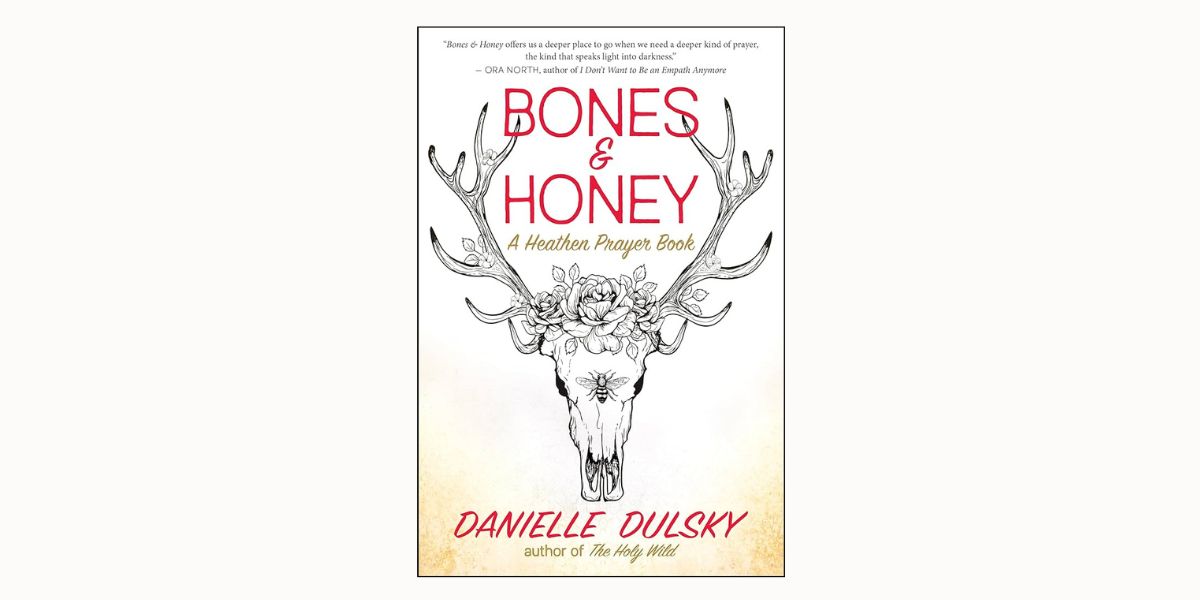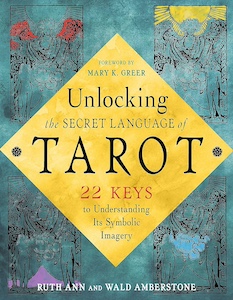
Bones & Honey: A Heathen Prayer Book, by Danielle Dulsky
New World Library, 1608688925, 208 pages, November 2023
While prayer comes from the heart, oftentimes we still long for the words to express ourselves. Bones and Honey: A Heathen Prayer Book by Danielle Dulsky gives voice to prayers we didn’t even know we needed—those secret whispers of the heart we can only hear when we slow down to listen. Dulsky’s words in this book are the balm to our weary soul in trying times, the catharsis that brings sweet release, to usher in a new vision.
“To pray is not to submit but to cast a spell, to speak our imaginations aloud and make manifest our most earnest requests. No spell comes to fruition without the confluence of innumerable sources, and every Witch knows this well. By extension, every spell is, in part, a prayer.”1
As a little girl, I devoutly learned to say my Christian prayers each night. Decades later, I will still find myself saying a quick Hail Mary at times, but that’s about the only prayer I can remember that feels resonant after wading through the wounds the Catholic Church inflicted on my spirit. I’ve yearned to have new prayers woven into my body and soul’s memory to call forth when needed, especially words to encapsulate what I’m feeling in the midst of troubling modern times featuring pandemics, ecological collapse, and war.
My path in witchcraft has unleashed unforeseen desires, teaching me the value of integrating all aspects of myself. Yet, it still remains a challenge to feel prayer deeply within my body, rather than as though I am being forced to prostrate myself to the limited gods available in modern religion, with hopes of calling into being my visions. Dulsky captures my sentiment perfectly in the introduction to this book, writing:
“As the veil continues to life, as the curtain rises to reveal far more sacred actors than the few famed gods whose names we all know well, we still need prayer. We have our own “earn requests,” not for forgiveness or redemption but for all beings, ourselves included, to be whole, well, and free.”2
What words are left when we cast our guilt, shame, and falsehood aside to reveal what’s left at the core (bones), instead opening up to be a channel for goodness and sweetness (honey) in the world? Whether you read these prayers aloud or quietly to yourself, the potent force of these prayers is bound to have a ripple effect.
Now, it’s worth noting that the term “prayer” in this book might be different from what one has come to associate with the term. Dulsky’s prayers include blessings, songs, and even short stories. And they are organized into thirteen books, each one an archetype that she believes is an important medicine for the world right now. Then every book consists of thirteen prayers related to the theme of the archetype.
Some examples of the books are “Book of Wild Lovers: Prayers for Lust, Seduction, and Majestic Relatedness”, “Book of the Nameless Grandmothers: Prayers for Ancestral healing, Lineage Exploration, and Forgiveness”, “Book of the Botanical Babe: Prayers for Innocents, Beginnings, and Wild Children”, and “Book of Shape-Shifters: Prayers for Time Weavers, Human Evolution, and Strange Futures”
These archetypal themes are just the general essence of each chapter, and Dulsky provides an overview of the significance of the archetype and why it’s relevant to healing in modern times. And if this is all feeling a bit heady now, as archetypes can sometimes be given their expansiveness, the organization of the book makes it VERY easy to find exactly the prayer you need at any point in time.
Skimming through the table of contents, one is easily able to find the right prayer for them. The prayers are all numbered and within the title is the circumstance to say the prayer. For instance, if I was looking for “6.2 In Praise of our Wild Stories: To Sing When the Moon is New” to do a ritual, I would immediately know to go to the second prayer in chapter six.
Admittedly, I’ve mostly read the book in bits and pieces as I feel called to by prayer, rather than moving through all the archetypes sequentially. But I think there’s value in delving into each archetype and moving through the prayers to understand the archetype’s energy more.
As for Dulsky’s writing, it’s lyrical, raw, and potent. It has a boldness that cuts deep, even in the tenderest of times. I’ve been reading the words aloud and often feel I become infused with a greater power; my voice shifts as I feel the emotion run through me. The brilliance of this book quickly becomes a channel, and I have no doubt the prayers I am reciting are reverberating to create change.
I’d like to say I picked a favorite poem to share, but every one I read stirs something within me that I can hardly set one above another. Some that have felt especially potent though are “9.2 See Our Joy: To Giggle-Spit at the False Prophets”, which reads in part:
“See our joy and be on your way, preacher. We repent nothing, and you can’t sell our own belonging back to us. We’ll find our own redemption in the forest and take our communion from the mountain stream, thank you very much.”3
I also have really been vibing with “6.1 The Old Haunted Skin: The Snake’s Dark Moon Energy”, which begins:
“Shedding this too-small skin, I am, for this serpentine queen makes herself ready for what comes.”4
Finally, the tender prayers of motherhood and wild children call to me, such as this snippet of “13.4 Love, Innocence, and Climate Change: A Prayer for Young Families”:
“Our strange souls chose each other to share a home in this time of great unraveling, in these wild moments of war, heat, disease, and rising waters. Fools might call it coincidence, the coming together of our peculiar family, the knowing ones understand the nature of fate.”5
All in all, Bones & Honey fills the reader with world-shifting, world-building, and world-sustaining words. Dulskey’s prayers defy time, connecting us to the past, present, and future, while anchoring us in our bodies. These prayers are much-needed medicine for our time, and I truly am excited to know I’ll be chanting them heart to heart with a powerful collective of heathens and witches.
Alanna Kali is an astrologer, numerologist, and pioneer spirit that loves to explore life through the lens of depth psychology. She has a passion for studying the humanities and social trends. Her academic work is centered upon reuniting body, mind, and spirit through eco-psychology. She loves reading, spending time in nature, and travel.























